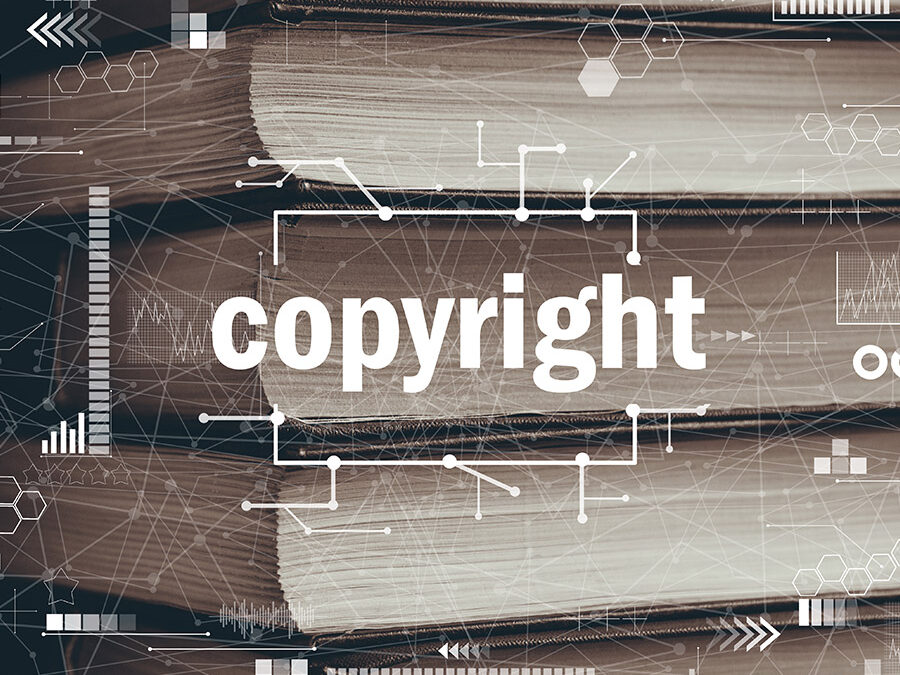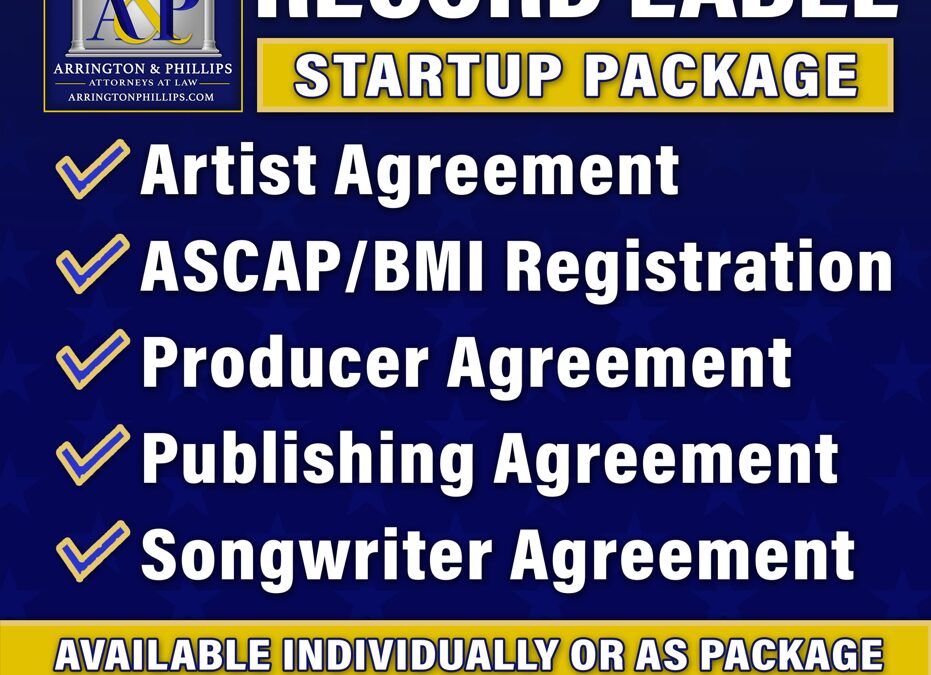
Nov 8, 2022 | Entertainment Industry, Music Law
Here’s the scenario: You want to make a great web-based promo for your small business. You learn a little about video editing, rent a pro-quality camera, and make an exceptional short film that showcases the reasons why your company is better than the competition. You add the music you like as the soundtrack and upload it to YouTube.
Suddenly, the video is taken down due to audio copyright issues. All that hard work and no one can view it. At Universal Production Music, we’ve heard many similar stories, so we put together this guide to help producers, editors, and professional content creators understand how to make sure your video won’t run into any audio copyright problems.
How to Legally Use Music in Videos
Though many laws seem complicated to many of us, it’s pretty easy to understand the legalese surrounding audio rights, at least when it comes to placing music in your work. Put simply; you can legally use music in videos if you have permission from the person, people, or company who owns the rights. Since the publisher and the record label usually hold music rights, you’ll have to get permission from both. From the publisher or composer, you’ll get a synchronization (or sync license). From the record label, you’ll obtain a master license (assuming the artist has a contract with a record label). You can always use a soundtrack that you write and record yourself, though most video producers don’t have the musical skills, access to recording equipment, and time that it takes to create this.
How to Legally Use Copyrighted Music
Once you decide on the piece of music you’d like to use and get in touch with the rights holders, you’ll have to negotiate a licensing deal. Generally, there are two types of deals; pay-per-use, where you pay a small sum every time your video plays, and licenses that allow you unlimited use of audio for a given amount of time. Once you decide what type of deal works for your needs and agree on a price, you can then stream, broadcast, share, or post your videos without fear of running into any audio copyright issues.
How to Get Permission to Use a Song
So how exactly do you ask for permission to use a song? If the audio you desire was written by a relatively unknown artist on a small record label, it might be possible to reach out to them directly. Of course, if you’re a small-time producer and you want to use a chart-topping single, you’ll probably have to shell out a good chunk of money if you can get through to the rights holders at all. The best way to obtain permission to use a song is to find your audio through a site specializing in selling music rights for video production.
right to stream and distribute your project. Universal Production Music is an industry leader with many years of experience and thousands of songs placed in everything from web clips to major motion pictures. We make professional music licensing easy, even for first-time content creators and producers. Browse our extensive libraries today or speak to a member of our team via Live Chat to find out more.

Nov 7, 2022 | Entertainment Industry, Music Law
Above the Line
There are two types of crew members. Above the line crew members are those who control the aesthetics of a movie, such as the director, producer and cinematographer, just to name a few. Above the line crew members are generally paid a flat fee, as provided in their employment agreements. These agreements most likely contain very complex terms and provisions than those needed for their below the line counterparts due to the nature and extent of their work on a film.
For example, a director’s employment agreement would include compensation for development and production, depending on when the director was hired. The agreement might also include a provision to share a part of the profits if the film does well at the box office.
Moreover, it is not uncommon for above the line crew to receive a daily stipend, or per diem, to cover their expenses while on-set. The agreement generally also includes provisions for how above the line crew are credited in a film, which can sometimes become highly contested.
Also, an agreement of this type might confer the right for directors to hire other crew members and to decide on the cast. A director might want to have control over the editing and final cut of the film and the extent of such control should also be memorialized in the director’s employment agreement.
Finally, an agreement with a director might have a “a right of first refusal” provision that gives the director a right to choose whether to direct any prequels or sequels of the film before the producers can hire another director. Like writers, many experienced directors are members of the DGA.
Their agreements would be subject to DGA rules and their Basic Agreement.
An agreement with a producer should also cover the basic terms of employment, such as a description of the producers’ obligations and compensation. The agreement should cover how the producer will be credited in the film.
Often, it is wise to have an exhaustive list of applicable terms memorialized in the agreement, rather than risking the possibility of running into problems in the course of the film production which could be catastrophic, especially at or near the end of the filmmaking stage.
Below the Line
“Below the Line” crew refers to those crew members who deal with hands-on aspects of filmmaking, such as lighting and sound technicians and script supervisors.
Below the line crew members are generally paid hourly, as opposed to the flat fee above the line crewmembers receive. Therefore, agreements with below the line crew are often less complex than those of their above the line counterparts.
Accordingly, a crew deal memo can be used instead of a full contract for below the line crew members. Deal memos include personal information of the crewmembers such as their name, address, and emergency contact information and social security number.
The deal memo also discusses individual crewmember’s job title, rate of compensation and expense reimbursement. The memo also covers what if any credit a crewmember will receive.
A deal memo is usually only one page long. Deal memos are often a good idea because they clearly set out all the important information on one page and copies can be made available to all crewmembers.
Because of its length, a deal memo is easy for reference, which is especially important in the event a conflict arises.

Nov 7, 2022 | Legal Community, Music Law
For a small business owner, it is critical to understand the aspects of business law that apply to your company, as they directly affect how your company operates. This includes contract law, employment law, tax law and workplace safety laws. Due to the complexities of these types of laws, it is important to get legal counsel from an attorney who specializes in small businesses.
See more legal tips for small business owners at
ArringtonPhillips.com, or call 404.349.2330 to get started today.

Nov 7, 2022 | Legal Community, Music Law
Say you want to use someone else’s copyrighted photograph in your blog or Instagram post. Is that “Fair Use” or copyright infringement? The answer is, it depends on the nature of the use, and the purpose of the use.
The Fair Use provisions of the Copyright Act allow you to copy and use copyrighted material for specific purposes — including criticism, comment, news reporting, teaching, scholarship, or research — that serve the public interest as determined by four factors:
-
The purpose and character of the use, including whether such use is of a commercial nature or is for nonprofit educational purposes.
-
The nature of the copyrighted work.
-
The amount and substantiality of the portion used in relation to the copyrighted work as a whole.
-
The effect of the use upon the potential market for or value of the copyrighted work.
Often, determining Fair Use is a no-brainer. If you’re writing a book review, you need to quote from the book in question in order to comment upon it. As a result, you have transformed the original copyrighted work into a new work in your book review.
Similarly, educational institutions can use photocopies of copyrighted work for students enrolled in a class, so long as the copying is limited to:
-
A chapter from a book.
-
An article from a periodical or newspaper.
-
A short story, short essay or short poem, whether or not from a collective work.
-
A chart, graph, diagram, drawing, or picture from a book, periodical, or newspaper.
What are the limitations of Fair Use?
There are limits to how much of a work can be copied for educational purposes. You also can’t use these photocopies as a substitute for required texts. In addition, you can’t charge for the photocopied work (except to recoup the costs of photocopying), and use of the copies by students cannot be mandatory.
In cases like these, Fair Use seems simple enough. They have served the public interest and have not harmed the market for the original work. In fact, book reviews and book excerpts often increase sales of the original work by publicizing them.
But sometimes Fair Use is harder to judge. In a
major 1973 Supreme Court case, the justices decided that even though copying and distributing medical journal articles for free to nonprofit government research libraries reduced sales to the journals’ publishers, the benefit to the public outweighed the harm to their business.
Other Cases
There are also times when determining Fair Use is a real head-scratcher. Take the case of New York “appropriation artist” Richard Prince whose work consists of taking the work of others, modifying it in some way, and then selling it — often for hundreds of thousands of dollars. As you might imagine,
he’s had several run-ins with copyright law in the past. In 2015, he was sued for adding a few emojis at the bottom of other people’s Instagram posts, taking screen-grabs, blowing them up in size, and then selling them for up to $100,000.
Does adding a few emojis to someone else’s Instagram post pass the “transformation” test required for Fair Use, or is the only transformation here one that turns the original poster’s creative work into Richard Prince’s profit? What do you think?
Want to Learn More About Fair Use and Other Intellectual Property Topics?
Protecting innovations and creative work is more crucial than ever in today’s Knowledge Economy. As a solution, “Intellectual Property: Inventors, Entrepreneurs, Creators” teaches the basics of IP to ordinary citizens, making IP accessible to everyone, not just lawyers and CEOs. Sign up for the FREE course on Udemy now and earn a certificate upon completion!
This is Part 8 of our ‘Basics of IP’ blog series. You can find Parts 1, 2, 3, 4, 5, 6, and 7 here. The following has been adapted from “Is it Fair Use or Infringement?”, a Michelson IP animated short.

Sep 15, 2022 | Film & TV, Filmmakers
Locations are a very important part of filmmaking, as most independent films are not filmed in a studio, but rather are filmed at leased a location. Agreements for locations cover how long and for how much a location is leased. The location agreement also addresses “rain dates”, in case filming needs to be rescheduled or re-shoots are required as a result of unforeseen circumstances.
A location agreement will also often grant a producer the rights to use the film shot on the location for other film projects. Perhaps the most important clause in a location agreement is the one that indemnifies the owners of any damages arising out of the use of the premises for filming and further protects the owners from tort liabilities that might arise as a result of filming.
In addition, producers generally include a disclaimer in the film location agreement that all depiction of the location is fictional and such filmography does not necessarily represent a true reflection of the actual location.
Source:
FilmDaily.tv – Film Contracts and Agreements to Protect Your Film for 2022

Jul 25, 2022 | Legal Community, Music Law
Whether you’re the victim of a car crash, medical mistake, or slip and fall, the experienced attorneys at attorneys of Arrington & Phillips, LLP can help you build a compelling case, gather relevant evidence, negotiate, and help you get the compensation you deserve. We diligently fight on behalf of our clients to help them receive maximum compensation with minimum stress, and help you understand your rights and options after an accident. Our goal is to provide you with the highest level of service and value throughout the entire process.

Jul 18, 2022 | Entertainment Industry, Music Law
At Arrington & Phillips, LLP, we understand the dedication you have applied to your career and will handle your legal matters with the utmost care and attention to detail. If you are an artist, record company, music publisher, or online music business, we can help with your intellectual property and business needs. Our wide range of experience in music legal issues includes:
-
Copyright and trademark law
-
Negotiation, review and drafting of contracts
-
Acquisition and development
-
Protection from lawsuits
-
General legal counsel
-
Litigation

Jul 15, 2022 | Legal Community, Music Law
If copyright creates
a group of exclusive rights in the creator, that should mean permission is needed when you want to incorporate someone else’s creative work into your own. But permission is not always needed. Fair use is a concept that can protect you from a claim of infringement when using someone else’s work without permission. The question is, when is the use fair? There is no bright line answer to the fair use question but there is a framework for analyzing the problem.
The Four Factors of Fair Use
Four factors must be considered when thinking about fair use:
(1) the purpose and character of the use including whether the use is of a commercial nature or is for nonprofit educational purposes;
(2) the nature of the copyrighted work;
(3) the amount and substantiality of the portion used in relation to the copyrighted work as a whole; and
(4) the effect of the use upon the potential market for or value of the copyrighted work.
These factors must be balanced in light of the objective of copyright law which is to encourage the progress of useful arts. Many people suffer from the misconception that if a use is commercial, it cannot be fair. The
Supreme Court has rejected that notion:
“Instead, the central purpose of the analysis is to see whether the new work merely supersedes the original creation, or instead adds something new, with a further purpose or different character, altering the first with new expression, meaning, or message; it asks, in other words, whether and to what extent the new work is transformative. “
The more transformative the new work the less important the other factors, including commercialism, become.
How have you changed the work?
Let’s take a look at each factor using concrete examples of the law in action (often inconsistently) in specific cases.
The First Factor
How and why are you using the original work? That is the essence of the first factor — the purpose and character of use.
The estate of Dr. Seuss tried to shut down a play called Who’s Holiday which depicts the character Cindy Lou Who in middle age. The story picks up from where The Grinch Who Stole Christmas left off and things haven’t gone well for Cindy Lou.
Cindy Lou is not so sweet and innocent anymore. She’s a drug-addled, foul-mouthed, ex-con who had a child with the Grinch then killed him (the Grinch, not the child). The court had no trouble finding that the play is transformative of the original work because it recontextualizes the children’s story by mocking its naiveté.
Parody is considered transformative and therefore fair use because of its character and purpose. Scholarship, research and educational uses often also qualify as fair use.
Fair Use Tip
Be prepared to articulate why you have chosen to use someone else’s creative work and how you have transformed it into something new or with a different message.
Transformative use has found footing in the visual arts. An LA street artist sued the band Green Day for infringement when they used his image as part of a video back drop for their stage performances.
The court decided that the use was fair because the image conveyed new information, aesthetics, insights, and understandings distinct from the original piece. Incidentally, the street artist, Derek Seltzer, had a copyright registration on his work
unlike Rime. But, as they say in the UK, fat lot of good it did him.
The Second & Third Fair Use Factors
Highly creative works are entitled to more protection than works that are less creative. That’s the crux of the second factor. Facts and ideas aren’t protected by copyright at all.
When Gerald Ford left office, he wrote a memoir in which he explained his rationale for pardoning Richard Nixon. The magazine The Nation obtained a pre-release copy and wrote an article called “Behind the Nixon Pardon.” The article quoted 300 words verbatim from the book. Ford’s publishers sued for infringement.
The magazine argued that facts aren’t protected by copyright. The pardon is a fact of historic significance. Plus, they only used 300 words out of the book and the rest was paraphrased so there couldn’t be infringement, they reasoned.
The case went all the way up to the Supreme Court which held that Ford’s expression of the facts surrounding the pardon is creative and protected.
The 300 words The Nation took are the heart and soul of the book and were made into the “dramatic focal points” of the article. Even though not many words were taken, the ones that were taken were substantial (the third factor). Everybody wanted to know what Ford was thinking when he pardoned Nixon and The Nation scooped the man’s own words.
It was a case of principle, not principal. The publishers were awarded $12,500 for their victory.
The Fourth Fair Use Factor
If use of the original work has a negative impact on its marketability, that weighs against fair use.
In the Sconnie Nation case, a small batch of T-shirts was made from a photograph of the mayor of Madison, Wisconsin. The image was snagged off of the city’s website, posterized (reduced to a small number of different tones), the background removed, and the mayor’s face was turned green. The photographer sued for infringement.
The court held that the use of the image was fair because the T-shirt did not have an adverse impact on the market for the photograph. This seems plausible. The third factor also supported fair use because the court decided only a small amount of copying was involved. This seems disingenuous but that’s how these things go sometimes. Although the court found fair use, the transformative nature (or not) of the work played no role.
Fair Use Isn’t Always Needed
When permission is given for use of an original work such as with Creative Commons licenses, a fair use analysis isn’t needed. If the original creative work is in the public domain, fair use does not need to be considered. Public domain works are not protected by copyright.
Another example of copyright-free material is a faithful photographic reproduction of a two-dimensional piece of art. The art itself might be protected by copyright, say a new piece of visual art, but the photo of the art is not.
Fair Use Protection Isn’t Perfect
Whether using someone else’s creative work is fair is a fact intensive analysis — with the possibility of different conclusions depending on who does it. But it is an important analysis to make because it reduces your risk of an infringement claim if you’re using someone else’s work. Considering the four factors of fair use also protects you from making an incorrect claim that someone else has infringed your work.
About the Author
Kathryn Goldman helps small business people, writers, artists, and creative professionals make a living from their creative work by teaching them how to protect and enforce their rights.
She is an attorney who writes these posts to help you be more thoughtful about intellectual property and the law as you build your business, write your stories, and create your art.

Jul 13, 2022 | Film & TV, Filmmakers
Postproduction refers to the time in the movie production when the shooting is done and the film is undergoing editing which requires the help of editors and composers. Common agreements needed during this time period include editor agreements and composer agreements.
Like actors, editors and composers may belong to a guild or union which can impact the nature and complexity of their agreements. However, the agreements will typically include the term of employment, the rate of employment and should also address who will own the finished product.
Editors are usually hired on a “work-for-hire” basis, which enables the producer to maintain ownership of the edited product. Often, compensation is divided based on the number of times the film needs to be edited or the number of compositions that are required to be written by the composer.
It is not uncommon for a film to use many editors at a time and it is therefore important to split the agreement up in this manner to ensure that the producer can continue to hire more editors as needed.
It is also critically important for the success of a film to use music and other sound to create sound effects. It is equally important to use clips of film and TV to enhance the overall presentation of the movie. This is a very complex area of filmmaking and unsurprisingly involves even more types of agreements, clearances, and licenses, such as sync agreements.









